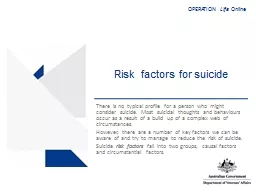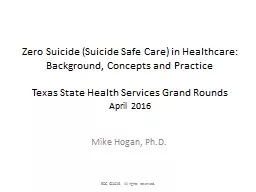PPT-Suicide Introduction and Book One: Extra-Social Factors
Author : celsa-spraggs | Published Date : 2018-03-13
wwwpsychiatricnursingfmconyolasitecom New Project Okay rather than a test lets gather data on suicide from the US in recent times and see how many of the questions
Presentation Embed Code
Download Presentation
Download Presentation The PPT/PDF document "Suicide Introduction and Book One: Extra..." is the property of its rightful owner. Permission is granted to download and print the materials on this website for personal, non-commercial use only, and to display it on your personal computer provided you do not modify the materials and that you retain all copyright notices contained in the materials. By downloading content from our website, you accept the terms of this agreement.
Suicide Introduction and Book One: Extra-Social Factors: Transcript
Download Rules Of Document
"Suicide Introduction and Book One: Extra-Social Factors"The content belongs to its owner. You may download and print it for personal use, without modification, and keep all copyright notices. By downloading, you agree to these terms.
Related Documents














